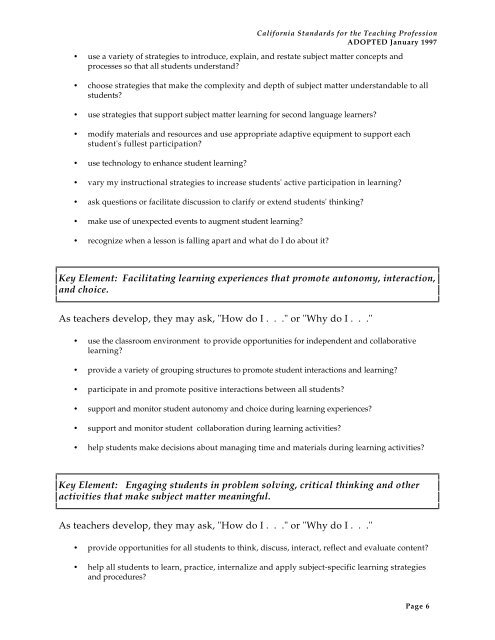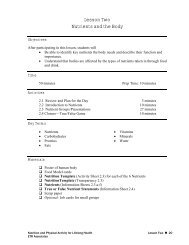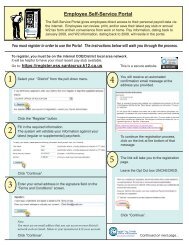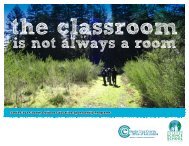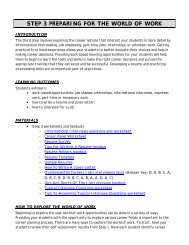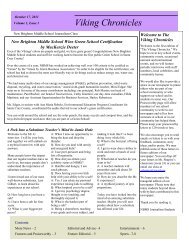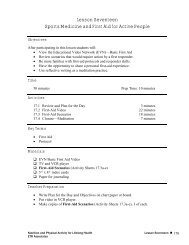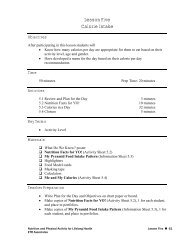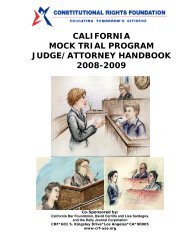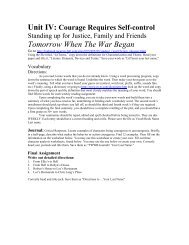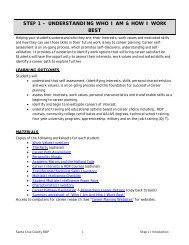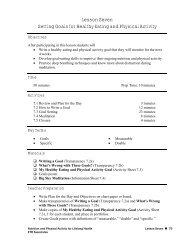California Standards for the Teaching Profession - Commission on ...
California Standards for the Teaching Profession - Commission on ...
California Standards for the Teaching Profession - Commission on ...
Create successful ePaper yourself
Turn your PDF publications into a flip-book with our unique Google optimized e-Paper software.
<str<strong>on</strong>g>Cali<str<strong>on</strong>g>for</str<strong>on</strong>g>nia</str<strong>on</strong>g> <str<strong>on</strong>g>Standards</str<strong>on</strong>g> <str<strong>on</strong>g>for</str<strong>on</strong>g> <str<strong>on</strong>g>the</str<strong>on</strong>g> <str<strong>on</strong>g>Teaching</str<strong>on</strong>g> <str<strong>on</strong>g>Professi<strong>on</strong></str<strong>on</strong>g><br />
ADOPTED January 1997<br />
• use a variety of strategies to introduce, explain, and restate subject matter c<strong>on</strong>cepts and<br />
processes so that all students understand<br />
• choose strategies that make <str<strong>on</strong>g>the</str<strong>on</strong>g> complexity and depth of subject matter understandable to all<br />
students<br />
• use strategies that support subject matter learning <str<strong>on</strong>g>for</str<strong>on</strong>g> sec<strong>on</strong>d language learners<br />
• modify materials and resources and use appropriate adaptive equipment to support each<br />
student's fullest participati<strong>on</strong><br />
• use technology to enhance student learning<br />
• vary my instructi<strong>on</strong>al strategies to increase students' active participati<strong>on</strong> in learning<br />
• ask questi<strong>on</strong>s or facilitate discussi<strong>on</strong> to clarify or extend students' thinking<br />
• make use of unexpected events to augment student learning<br />
• recognize when a less<strong>on</strong> is falling apart and what do I do about it<br />
Key Element: Facilitating learning experiences that promote aut<strong>on</strong>omy, interacti<strong>on</strong>,<br />
and choice.<br />
As teachers develop, <str<strong>on</strong>g>the</str<strong>on</strong>g>y may ask, "How do I . . ." or "Why do I . . ."<br />
• use <str<strong>on</strong>g>the</str<strong>on</strong>g> classroom envir<strong>on</strong>ment to provide opportunities <str<strong>on</strong>g>for</str<strong>on</strong>g> independent and collaborative<br />
learning<br />
• provide a variety of grouping structures to promote student interacti<strong>on</strong>s and learning<br />
• participate in and promote positive interacti<strong>on</strong>s between all students<br />
• support and m<strong>on</strong>itor student aut<strong>on</strong>omy and choice during learning experiences<br />
• support and m<strong>on</strong>itor student collaborati<strong>on</strong> during learning activities<br />
• help students make decisi<strong>on</strong>s about managing time and materials during learning activities<br />
Key Element: Engaging students in problem solving, critical thinking and o<str<strong>on</strong>g>the</str<strong>on</strong>g>r<br />
activities that make subject matter meaningful.<br />
As teachers develop, <str<strong>on</strong>g>the</str<strong>on</strong>g>y may ask, "How do I . . ." or "Why do I . . ."<br />
• provide opportunities <str<strong>on</strong>g>for</str<strong>on</strong>g> all students to think, discuss, interact, reflect and evaluate c<strong>on</strong>tent<br />
• help all students to learn, practice, internalize and apply subject-specific learning strategies<br />
and procedures<br />
Page 6


